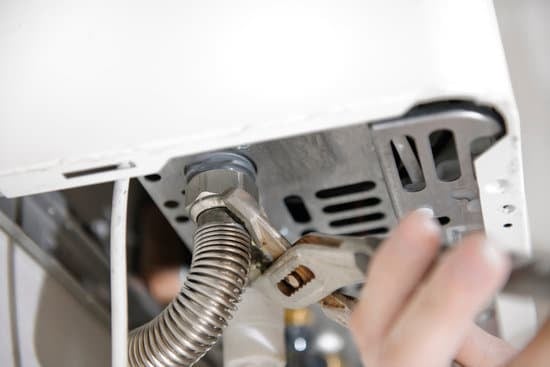Are you wondering how to get a home improvement loan with a mortgage? Home improvement loans can be an excellent financing option for homeowners looking to upgrade their homes. Whether you’re interested in renovating your kitchen, adding a new bathroom, or making energy-efficient upgrades, leveraging a mortgage for home improvement can provide the funding you need to make your vision a reality.
When it comes to understanding home improvement loans, it’s essential to explore the different types of financing available in the market. From personal loans and home equity lines of credit (HELOC) to government-insured renovation loans, there are various options to consider. Additionally, many homeowners choose to leverage their existing mortgage for funding their home improvements due to the lower interest rates and longer repayment terms.
Assessing your financial situation is crucial before applying for a mortgage-backed home improvement loan. Understanding your current financial status, evaluating the equity in your home, and calculating how much you can afford to borrow will help you determine the feasibility of taking on additional debt for renovations.
Researching lenders and loan options is also an important part of the process, as it allows you to compare interest rates, terms, and eligibility criteria for each potential lender. By doing so, you can find the most suitable financing solution for your specific needs.
Assessing Your Financial Situation
Understanding your financial situation is a crucial step in determining how to get a home improvement loan with a mortgage. Before applying for a loan, it’s important to assess your current financial status. This includes evaluating your income, expenses, and existing debts. It’s also essential to take stock of your credit score, as this will play a significant role in the approval process for a home improvement loan.
In addition to understanding your personal finances, it’s also important to evaluate the equity in your home. Equity is the difference between the market value of your property and the outstanding balance on your mortgage. The amount of equity you have in your home will determine how much you can borrow for home improvements using a mortgage-based loan.
Once you have a clear understanding of your financial situation and the equity in your home, you can calculate how much you can afford to borrow for home improvements. This involves looking at your monthly budget and determining how much of an additional loan payment you can comfortably manage.
It’s important to be realistic about what you can afford and not overextend yourself financially. By carefully assessing your financial situation, you can make informed decisions about leveraging a mortgage for home improvement while ensuring that you stay within budget and avoid any unnecessary financial strain.
Researching Lenders and Loan Options
When it comes to obtaining a home improvement loan with a mortgage, it’s crucial to thoroughly research different lenders and loan options available in the market. Here are some steps to consider when researching lenders and loan options:
- Comparing Different Lenders: Start by researching and comparing different lenders offering home improvement loans. Look for reputable financial institutions that offer competitive rates and terms for mortgage-backed home improvement loans.
- Exploring Interest Rates and Terms: Take the time to explore the interest rates and terms of the loan offered by each lender. Pay attention to factors such as fixed or variable interest rates, loan repayment periods, and any additional fees associated with the loan.
- Understanding Eligibility Criteria: It’s important to understand the eligibility criteria for each lender offering home improvement loans. This may include credit score requirements, income verification, and other financial considerations that will impact your ability to qualify for a mortgage-backed home improvement loan.
By thoroughly researching different lenders and loan options, you can make an informed decision about which financial institution offers the best terms and rates for your specific home renovation needs. This will ultimately help you secure a home improvement loan with a mortgage that aligns with your financial situation and goals.
Finally, before making any commitments, consult with a financial advisor or mortgage specialist to gain further insights into how to get a home improvement loan with a mortgage that suits your needs.
Applying for a Mortgage-Backed Home Improvement Loan
When considering a home improvement project, one viable option for financing is to apply for a mortgage-backed home improvement loan. This type of loan allows homeowners to leverage the equity in their property to fund renovations or upgrades, making it an attractive choice for those looking to increase the value of their home.
In this section, we will explore the steps involved in the application process, necessary documentation required, and the timelines and approval process for obtaining a mortgage-backed home improvement loan.
Steps Involved in the Application Process
Applying for a mortgage-backed home improvement loan typically involves several steps. First, you will need to research and select a lender that offers this type of financing. Once you have identified a suitable lender, you will need to fill out an application form with details about your financial situation, including income, expenses, and existing debts. The lender will also require information about the planned home improvements and their estimated cost.
Necessary Documentation Required for the Application
To support your application for a mortgage-backed home improvement loan, you will need to provide various documents. These may include proof of income such as pay stubs or tax returns, as well as documentation related to your property, such as a property assessment report and proof of ownership. Additionally, you may be required to submit detailed plans and cost estimates for the proposed renovations or upgrades.
Timelines and Approval Process
Once your application and documentation are submitted, the lender will review your financial situation, credit history, and the proposed home improvement project. The timelines for approval can vary depending on the lender and the complexity of your application.
Some lenders may offer pre-approval options that can provide an estimate of how much you may qualify to borrow before submitting a formal application. Upon approval, funds are typically disbursed either in a lump sum or in stages as agreed upon in the loan terms.
By understanding these processes involved with applying for a mortgage-backed home improvement loan they can make an informed decision regarding their renovation financing options.
Leveraging Your Mortgage for Home Improvement
When it comes to funding home improvement projects, one option to consider is leveraging your existing mortgage. By using your mortgage for home upgrades, you can access a larger sum of money compared to other types of loans, and often at more favorable interest rates. However, it’s important to understand the process of how to get a home improvement loan with a mortgage in order to make an informed decision.
One way to use your mortgage for home improvement is through a cash-out refinance. This involves refinancing your existing mortgage for an amount higher than what you currently owe and receiving the difference in cash. The extra funds can then be used for home renovations or repairs. Another option is a home equity loan or line of credit, which allows you to borrow against the equity you’ve built in your home.
It’s essential to carefully weigh the benefits and risks of using your mortgage for home improvement before making a decision. While leveraging your mortgage can provide access to substantial funds at lower interest rates, it also means taking on additional debt secured by your property. It’s crucial to consider the long-term financial implications and ensure that you can manage the added financial burden effectively.
Relevant Table
| Leveraging Your Mortgage | Detail |
|---|---|
| Types of Loans | Cash-out refinance, Home equity loan/line of credit |
| Benefits | Access to larger sum of money at favorable interest rates |
| Risks | Potential additional debt secured by property |
Managing Your Home Improvement Funds
When it comes to home improvement projects, managing the funds effectively is crucial to ensure that the renovations are completed within budget and without financial stress. Here are some tips for budgeting and managing the loan funds effectively:
- Create a detailed budget: Before starting any home improvement project, it’s essential to create a comprehensive budget outlining all the expenses involved. This should include not only the cost of materials and labor but also any unexpected expenses that may arise during the renovation process.
- Obtain multiple quotes: When sourcing materials and contractors for the project, it’s advisable to obtain multiple quotes to ensure that you are getting the best value for your money. This can help in making informed decisions and avoiding overspending.
- Set aside a contingency fund: It’s common for home renovation projects to encounter unforeseen costs or delays. Setting aside a contingency fund of around 10-20% of the total project cost can provide a safety net for any unexpected expenses that may arise.
Best Practices for Overseeing Home Renovation Projects
Once the funds have been allocated for the home improvement project, it’s important to oversee the renovations effectively to ensure that the funds are used efficiently and in accordance with the planned budget.
- Regularly communicate with contractors: Maintaining open lines of communication with contractors and suppliers can help in addressing any issues or changes that may impact the budget or timeline of the project.
- Monitor progress and expenses: Keeping track of the progress of the renovation work as well as monitoring expenses incurred can provide insights into whether the project is staying within budget or if adjustments need to be made.
- Quality control: Ensuring that high-quality materials and workmanship are used in the renovation process can prevent future repair costs and add long-term value to your home.
By following these tips for managing your home improvement funds, you can ensure that your loan is used efficiently and effectively towards enhancing your living space while staying within budget.
Repaying the Home Improvement Loan
After securing a home improvement loan with a mortgage, it is important to understand the repayment terms and options available to borrowers. Depending on the type of loan obtained, there may be different repayment plans and schedules that need to be considered. One of the key factors to consider is the interest rate attached to the loan, as this will have a significant impact on the overall cost of borrowing.
When repaying a home improvement loan with a mortgage, borrowers should also carefully plan their finances to ensure that they can meet their repayment obligations. This may involve creating a budget that takes into account the additional financial burden of the loan, as well as any other existing debts or expenses. It is important to prioritize repayments for the home improvement loan to avoid defaulting and potentially risking loss of your property through foreclosure.
It is also advisable for borrowers to explore different options for managing their loan repayment. This may include making extra payments or consolidating debt in some cases. By outlining a clear repayment strategy and seeking advice from financial professionals where necessary, borrowers can better manage their home improvement loan with a mortgage.
| Key Points | Details |
|---|---|
| Interest Rates | Consider the impact of interest rates on overall borrowing cost |
| Budgeting | Create a budget that accounts for additional financial burden of the loan |
| Repayment Strategy | Explore different options for managing loan repayment such as making extra payments or consolidation |
Conclusion
Securing a home improvement loan with a mortgage can be a smart financial move for homeowners looking to renovate their living space. By understanding the concept of home improvement loans, assessing your financial situation, researching lenders and loan options, and applying for a mortgage-backed home improvement loan, you can leverage your mortgage to fund necessary renovations.
It’s important to consider the benefits and risks associated with using a mortgage for home improvements, as well as effectively managing the funds and planning for loan repayment.
In conclusion, when considering how to get a home improvement loan with a mortgage, it’s crucial to thoroughly research and understand the available options. By comparing different lenders, exploring interest rates and terms, and ensuring that you meet the eligibility criteria, you can find the right loan for your needs. Additionally, responsibly managing the borrowed funds and planning for loan repayment are essential steps in successfully utilizing a mortgage for home improvements.
To further explore this topic and gain more insights into securing a home improvement loan with a mortgage, it’s highly recommended to seek additional resources. Whether it’s speaking with financial advisors or conducting independent research on reputable websites, gathering more information will help homeowners make informed decisions about funding their renovation projects. With careful planning and consideration of all factors involved, homeowners can confidently move forward with their home improvement plans using a mortgage-backed loan.
Frequently Asked Questions
Can You Add a Home Improvement Loan to Your Mortgage?
Yes, it is possible to add a home improvement loan to your mortgage. This can be done through a cash-out refinance, where you refinance your existing mortgage and take out a larger loan to cover the cost of the home improvements.
Can I Borrow More on My Mortgage for Home Improvements?
If you have built up enough equity in your home, you may be able to borrow more on your mortgage for home improvements. With a cash-out refinance or a home equity line of credit (HELOC), you can tap into the equity you’ve accumulated and use that money for renovations.
How Do Mortgages Work With Renovations?
Mortgages can work with renovations in several ways. One option is to apply for a renovation loan, which allows you to finance the cost of the renovations upfront and roll it into your mortgage. Another option is a home equity loan or HELOC, which lets you borrow against the value of your home to fund the improvements.

I’m thrilled to have you here as a part of the Remodeling Top community. This is where my journey as an architect and remodeling enthusiast intersects with your passion for transforming houses into dream homes.





